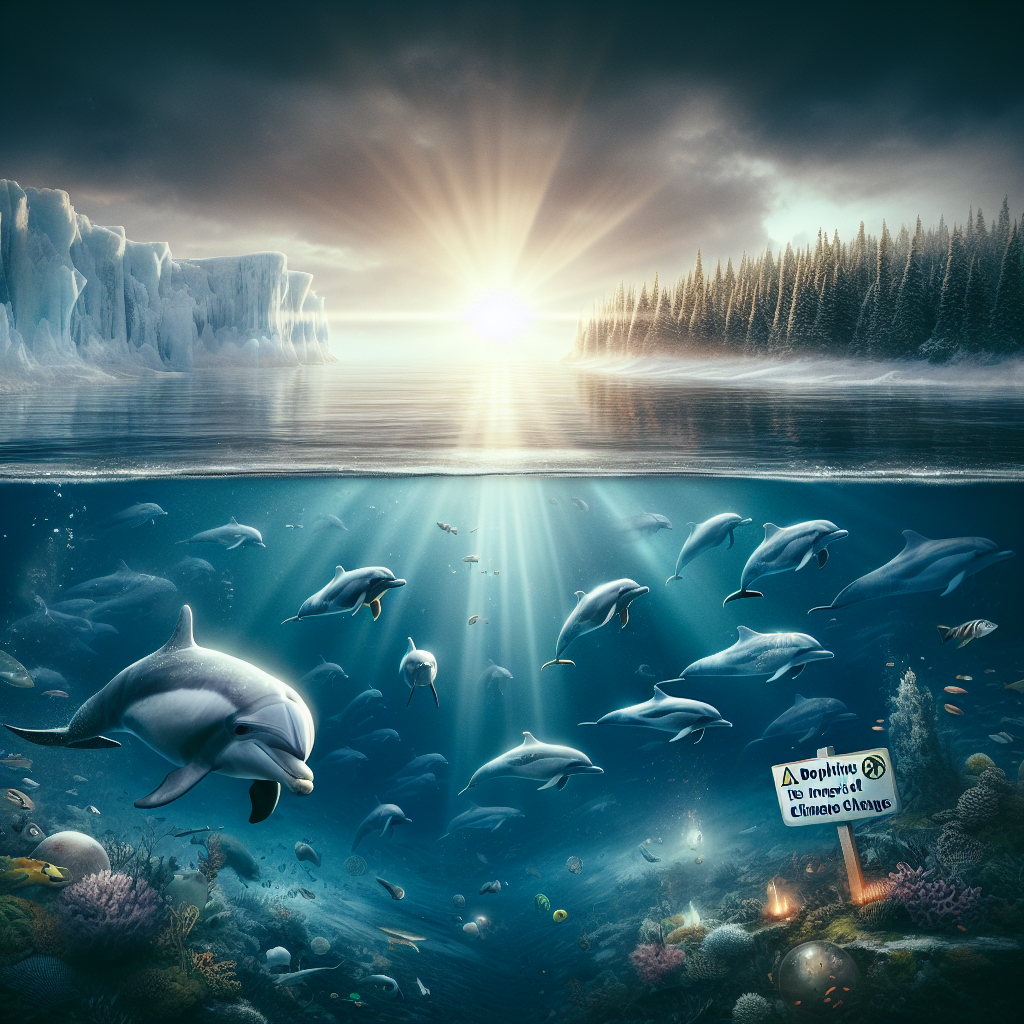Dolphins in Danger: The Impact of Climate Change on Their Habitats

Dolphins have long captivated human imagination with their intelligence, playful behavior, and remarkable social structures. These marine mammals are not just symbols of oceanic grace but also vital indicators of the health of marine ecosystems. Unfortunately, their habitats are facing unprecedented threats due to climate change. This article explores the impacts of climate change on dolphin habitats and the broader implications for the marine environment.
Understanding Dolphin Ecosystems
Dolphins inhabit a diverse range of aquatic environments, from the shallow coastal waters of estuaries to the vast expanses of the open ocean. Many species are highly reliant on certain habitats, including coral reefs, seagrass beds, and estuaries, which support the fish and other prey they depend on for survival. The health of these ecosystems is intricately linked to climate conditions, making dolphins vulnerable to changes in their environment.
Warming Oceans and Dolphin Habitats
One of the most apparent impacts of climate change is the rising temperature of ocean waters. Dolphins are warm-blooded animals, but their survival depends on the availability of suitable habitats. As sea temperatures rise, the distribution of prey species shifts, often leaving dolphins in search of food. Some dolphin species, particularly those that prefer cooler waters like the orca and the common dolphin, face the challenge of relocating as their traditional habitats become inhospitable.
Furthermore, warmer temperatures contribute to the deterioration of vital marine habitats. Coral bleaching, a phenomenon driven by rising sea temperatures, not only threatens the rich biodiversity of coral reefs but also the species that depend on these ecosystems, including dolphins.
Ocean Acidification: A Silent Threat
Alongside rising temperatures, increased carbon dioxide (CO2) levels in the atmosphere contribute to ocean acidification. As the oceans absorb more CO2, the water becomes more acidic, impacting the ability of marine organisms, such as corals and shellfish, to build their skeletons and shells. This has cascading effects throughout the food web, ultimately affecting the prey dolphins rely upon.
Many dolphin species are known to hunt in specific areas where prey abundance is highest. If those areas are compromised due to acidification or loss of habitat, dolphins may struggle to find nourishment, potentially leading to population declines.
Sea Level Rise and Coastal Habitats
Many dolphin species are found in shallow coastal areas, which are increasingly threatened by rising sea levels. This phenomenon is driven by melting ice caps and the thermal expansion of seawater. As coastlines erode and mangrove forests disappear, the vital nurseries for numerous fish species are lost, further diminishing available food resources for dolphins.
Moreover, coastal development driven by climate change can disrupt critical habitats. Human encroachment often leads to pollution, habitat loss, and increased boat traffic, complicating the lives of dolphins and increasing the risks they face. Acoustics play a significant role in dolphin communication and echolocation, yet louder environments can impair these essential functions.
Behavioral Changes and Adaptation
Dolphins are known for their remarkable adaptability and intelligence, but shifts in their environment can strain their capacity to cope. In response to changing water temperatures and food availability, many dolphin populations are exhibiting altered migratory patterns and social structures. These changes can disrupt mating behaviors and impact population dynamics, potentially leading to long-term declines in vulnerable species.
Additionally, stress caused by environmental changes can increase susceptibility to diseases, which poses a further risk to dolphin populations already threatened by human activities such as hunting, pollution, and incidental catch in fishing gear.
Conservation Efforts and Future Prospects
Recognizing the threats posed to dolphin habitats by climate change is the first step toward ensuring their survival. Various organizations are working tirelessly to create marine protected areas, establish conservation programs, and advocate for policies that address climate change at both local and global levels.
Public awareness campaigns stressing the importance of dolphins as indicators of ocean health are crucial. By promoting sustainable practices, such as reducing plastic waste, supporting renewable energy, and advocating for policies that mitigate climate change, individuals can contribute to protecting dolphins and their ecosystems.
Conclusion
The plight of dolphins in the face of climate change serves as a potent reminder of how interconnected our world is. The challenges posed by climate change extend beyond the boundaries of human activity, affecting all species that call our oceans home. Protecting dolphins involves not only safeguarding their populations but also ensuring the health of marine ecosystems. Together, we must take action to mitigate climate change and preserve the oceanic environments that support these remarkable creatures. A sustainable future for dolphins is a sustainable future for us all.